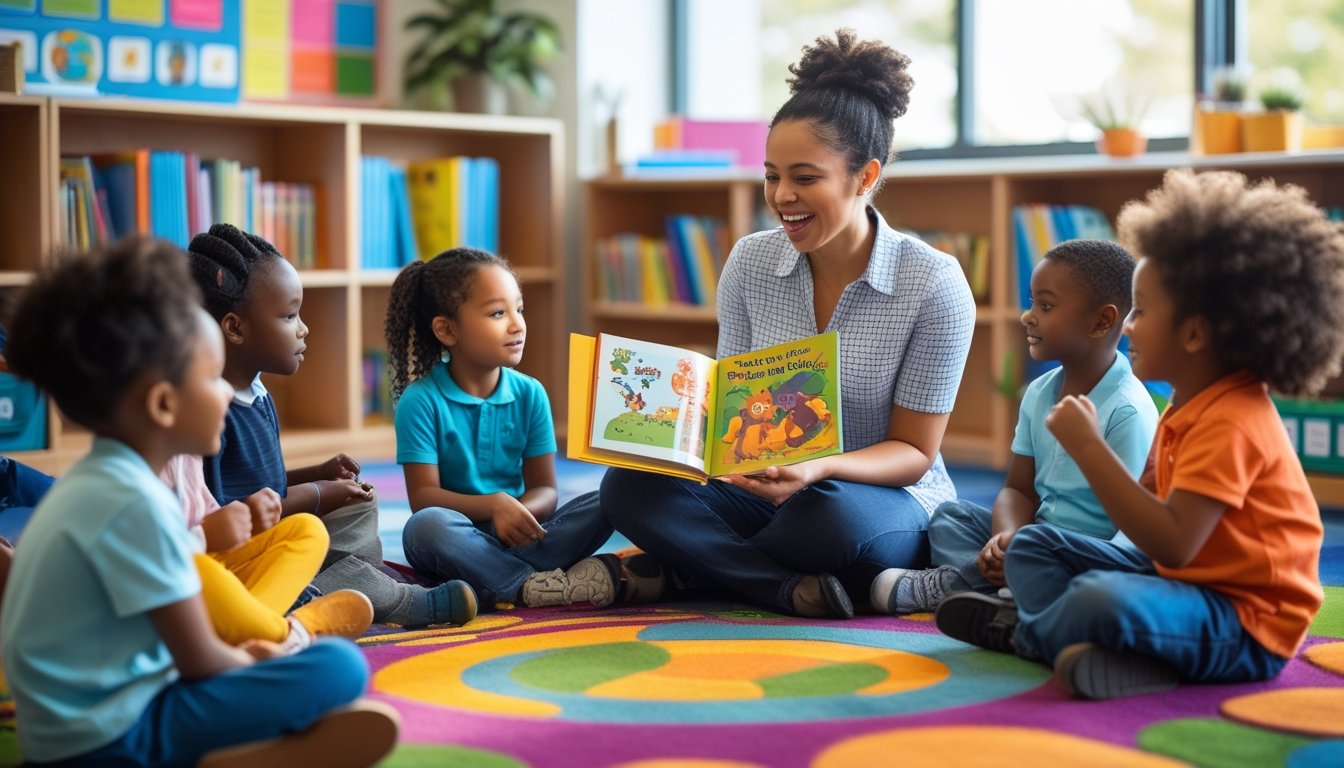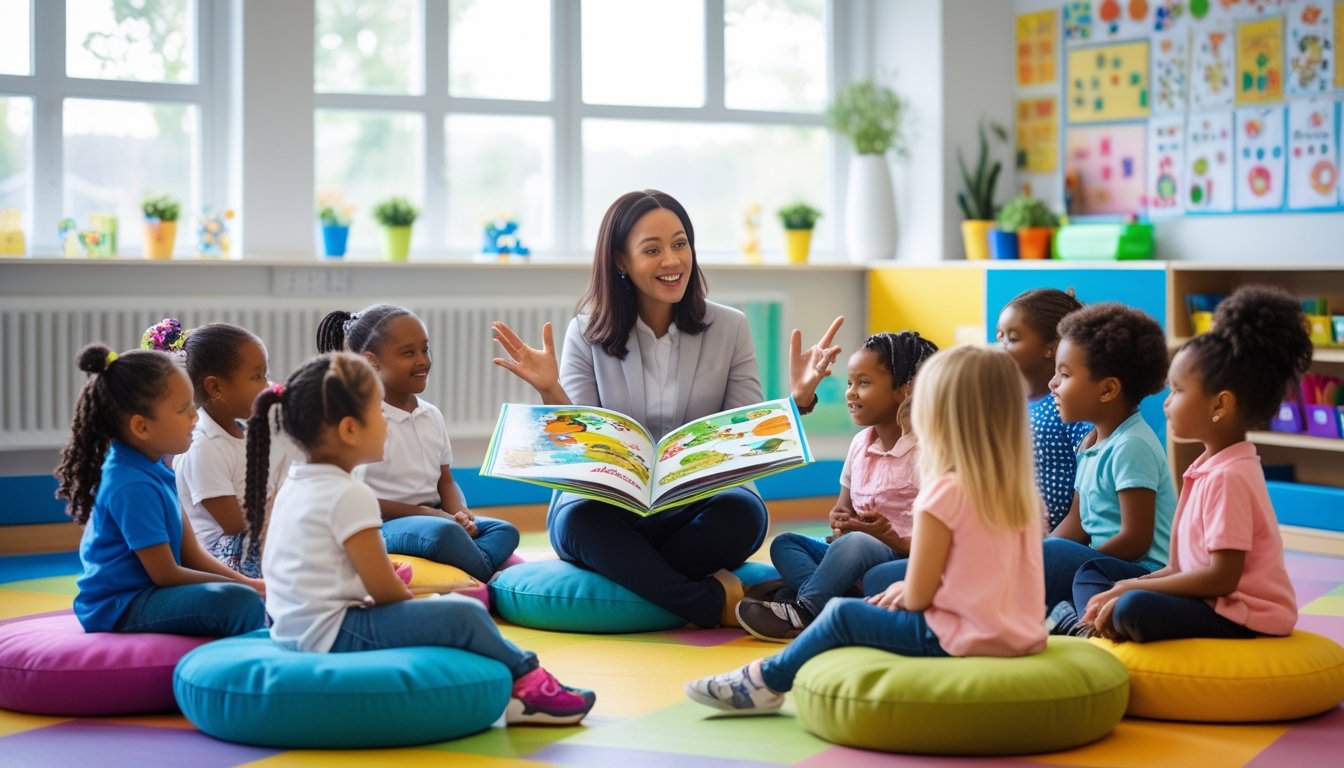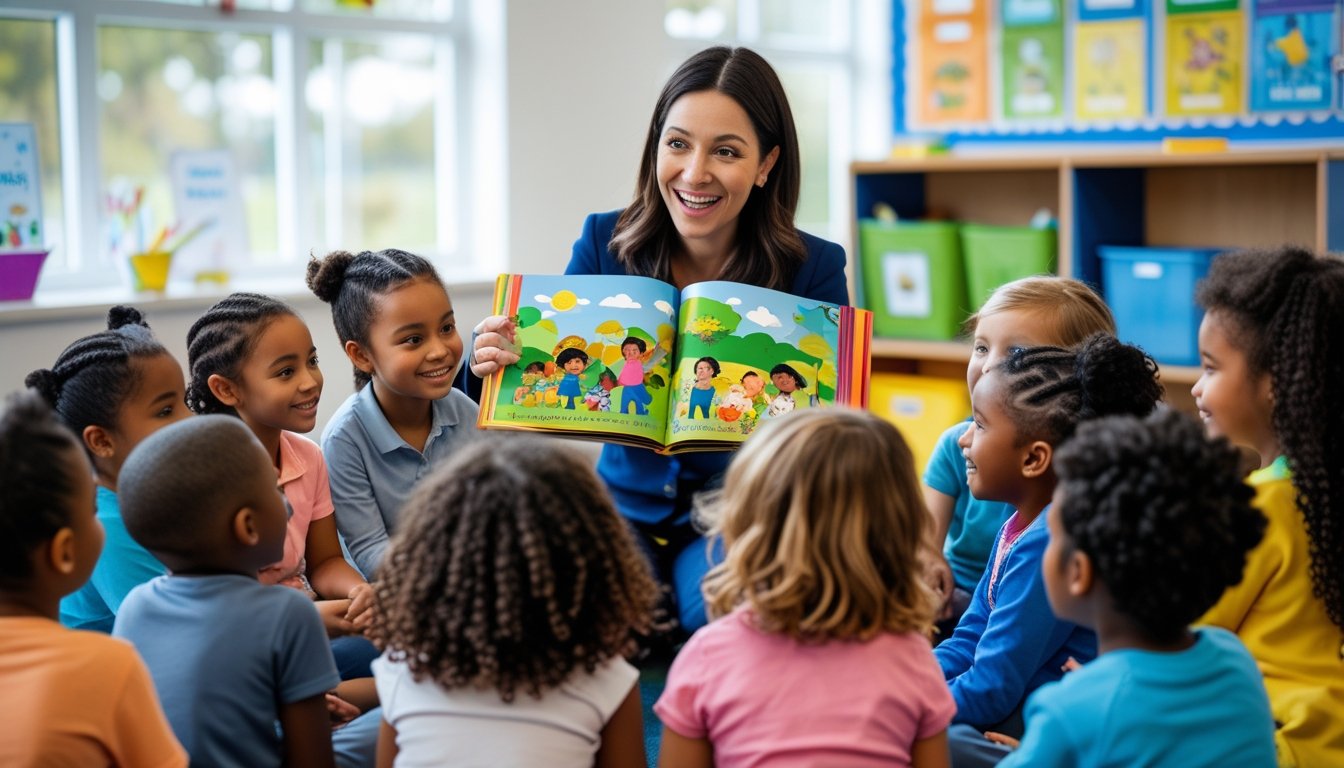Late updated: 15 Jul 2025 15:07
Written by:
Using Storytelling To Enhance Children's Learning: Innovative Techniques and Benefits
Storytelling holds a unique power in the realm of education. By engaging children's imaginations, storytelling can significantly boost their learning and creativity. The art of weaving narratives not only captivates young minds but also fosters a rich learning environment that nurtures curiosity and intellectual growth. As we guide children through stories, they explore emotions, encounter new concepts, and develop a lifelong passion for learning.

Integrating storytelling into early childhood education does more than spark creativity. It enhances cognitive, linguistic, and socio-emotional skills by encouraging children to think critically, express ideas, and understand others' perspectives. Such engagement provides a foundation for comprehensive learning experiences, enabling children to gain skills that extend beyond academic knowledge.
This article dives into the transformative power of storytelling in educational settings, revealing insights and strategies that educators and parents can employ. As we explore the multifaceted benefits of storytelling, we aim to provide practical methods to enrich children’s learning journey and answer commonly asked questions on leveraging stories in education.
Key Takeaways
- Storytelling enhances learning by boosting creativity and engagement.
- It builds critical thinking and socio-emotional skills in children.
- Practical storytelling strategies benefit educators and parents alike.
How Storytelling Enhances Children's Learning
Storytelling plays a pivotal role in children's education by promoting stronger language skills, fostering cognitive development, and encouraging creative thinking. Let's explore how storytelling serves as a valuable educational tool.
The Benefits of Storytelling in Early Childhood Education
Incorporating storytelling into early learning settings has manifold advantages. It provides more than just entertainment—storytelling nurtures interaction between educators and students, facilitating better comprehension of complex ideas.
By participating in story enactments, children gain a dynamic learning experience. Listening to stories introduces them to new cultures, ideas, and perspectives, expanding their worldviews. This interaction fosters engagement, creating a positive learning environment that fosters curiosity and a love for learning.
Impact on Language Development and Communication
Storytelling significantly bolsters a child's language acquisition. When we tell stories, children are exposed to varied vocabulary, sentence structures, and expressive language. This exposure enhances their ability to understand and use language effectively.
As they listen, children simultaneously improve their listening skills. They learn to differentiate sounds, a foundational skill for reading. Encouragement to retell stories aids in verbal communication, enabling children to express their thoughts coherently and confidently.
Development of Cognitive and Creative Thinking Skills
Narratives stimulate critical cognitive skills in young minds, such as sequencing, cause-and-effect relationships, and problem-solving. As children follow story plots, they practice logical reasoning—a crucial skill in academics and beyond.
Moreover, storytelling serves as a canvas for imagination. By visualising story scenarios, children enhance their creative thinking, imagining possibilities beyond the immediate storylines. This creativity nurtures innovation and adaptability, essential skills in our rapidly changing world.
Engagement in creative storytelling activities also empowers children to explore and express their individuality, fostering a sense of identity and self-esteem.
Building Social, Emotional, and Critical Thinking Skills Through Storytelling

Storytelling is a powerful tool that significantly impacts children's social, emotional, and cognitive development. By engaging with narratives, they gain empathy, improve cooperation, and enhance their problem-solving abilities.
Enhancing Emotional Skills and Empathy
As children listen to stories, they get to explore a wide range of emotions. Through characters' experiences, they learn about joy, sadness, fear, and love.
This exposure helps develop their emotional intelligence, which is vital for recognising and expressing their own emotions.
Stories also offer opportunities for children to put themselves in others' shoes, enhancing empathy. By understanding diverse perspectives, they learn to be compassionate. This process builds a strong foundation for emotional resilience, allowing them to navigate life's emotional challenges effectively.
Improving Social Skills and Cooperative Learning
Storytelling encourages interaction and engagement, enhancing social skills. When children discuss stories and their meanings with peers, they learn to listen actively and share ideas.
This social interaction promotes communication skills and encourages cooperative learning. Group storytelling activities, such as role-playing or creating collaborative narratives, foster teamwork and collaboration.
Participating in these activities also helps children develop negotiation skills as they work together to weave a story. By engaging in this socially dynamic process, they learn to appreciate diverse ideas and viewpoints.
Fostering Critical Thinking and Problem-Solving
Narratives provide a fertile ground for developing critical thinking skills. Children are challenged to analyse plots, predict outcomes, and understand characters' motivations.
Listening to stories encourages them to question, infer, and draw conclusions based on available information. When children actively engage with stories, they are honing problem-solving skills.
Tackling ambiguous situations within stories allows them to think creatively and consider multiple solutions. These experiences cultivate an insightful mindset essential for real-world challenges, fostering innovative thinking and a lifelong love for learning.
Frequently Asked Questions

Storytelling in education offers a unique approach to enhance children's learning. It engages their imaginations, encourages participation, and supports their overall development in various ways. Let's explore the specifics.
What benefits does storytelling provide in early childhood education?
Storytelling captivates children's attention by sparking their imagination. It encourages them to engage with the material emotionally, which can lead to better retention and understanding. Through stories, children gain insights into diverse cultures and historical contexts, enriching their learning experiences.
How does storytelling contribute to a child's development?
Storytelling plays a vital role in developing language skills, creativity, and critical thinking. By listening to and participating in stories, children enhance their vocabulary and comprehension. It also helps in building empathy as they relate to different characters and scenarios.
What are the advantages of utilising storytelling as a teaching method?
As a teaching method, storytelling facilitates active learning and fosters a deeper connection to the material. It allows children to learn in a narrative context, making complex concepts more accessible. This method also caters to various learning styles, providing a dynamic classroom environment.
Can storytelling in the classroom enhance learning outcomes for children?
Yes, storytelling can enhance learning outcomes by engaging students in an interactive way. It promotes curiosity and motivates children to explore topics further. By forming emotional connections with the stories, students are likely to remember and apply what they learn more effectively.
What are the potential drawbacks of using storytelling in an educational context?
One potential drawback might be the time required to prepare and deliver stories effectively. There's also a risk that not all children will engage with storytelling equally, depending on their individual learning preferences. It requires careful planning to ensure all students benefit.
How can storytelling be effectively integrated into early childhood curriculum?
To integrate storytelling effectively, educators can use voice modulation, facial expressions, and gestures to make stories more engaging. Incorporating props and encouraging role-play can also enhance participation. Aligning stories with curriculum goals ensures storytelling supports educational objectives comprehensively.
